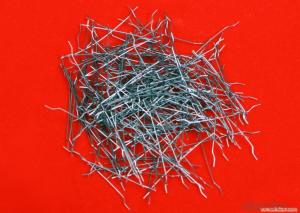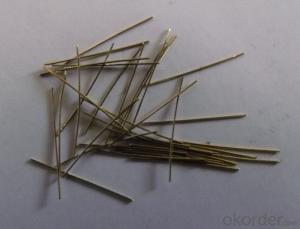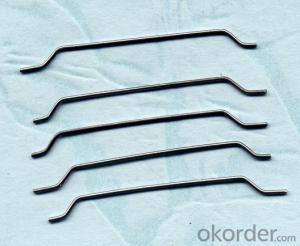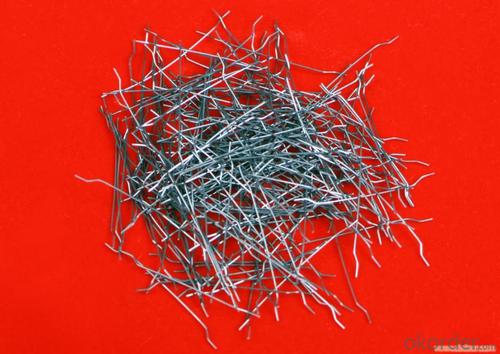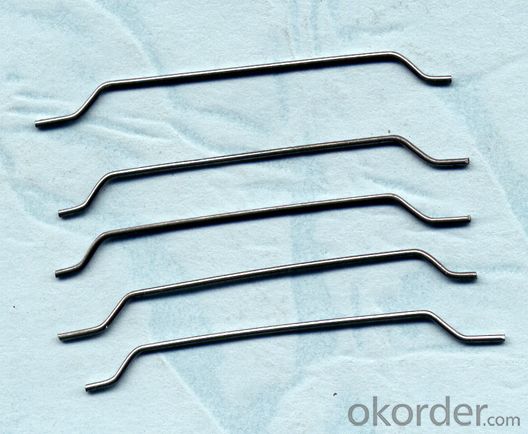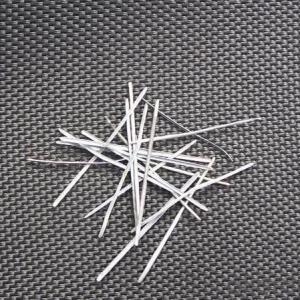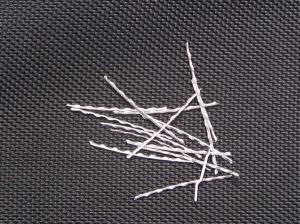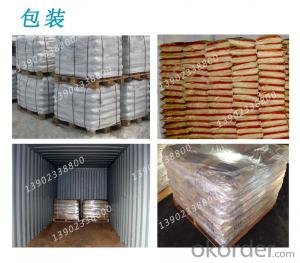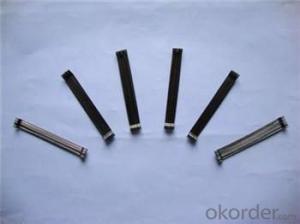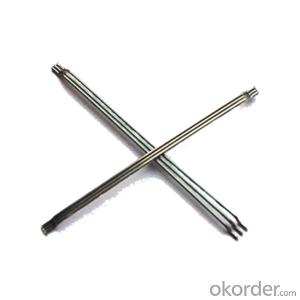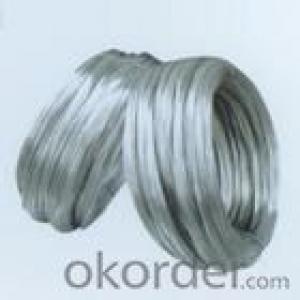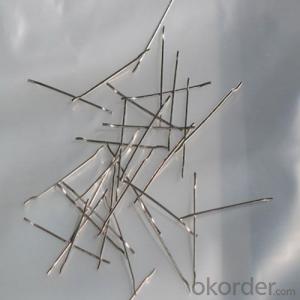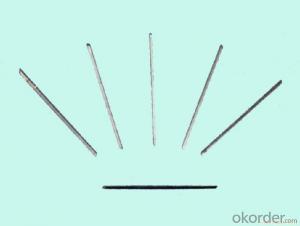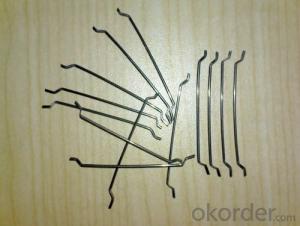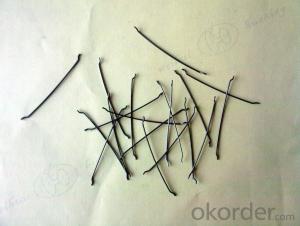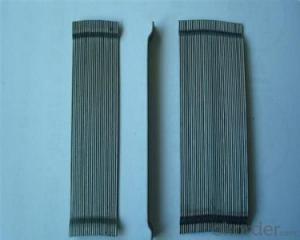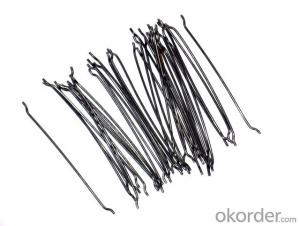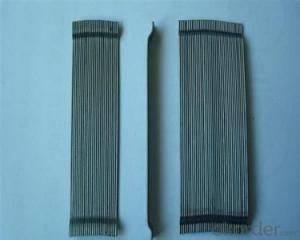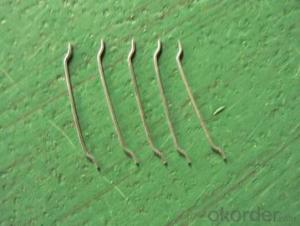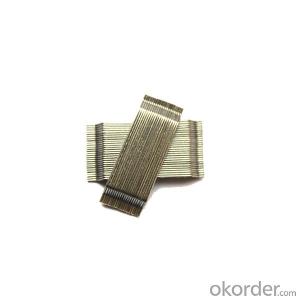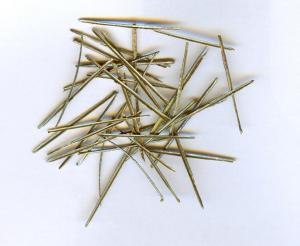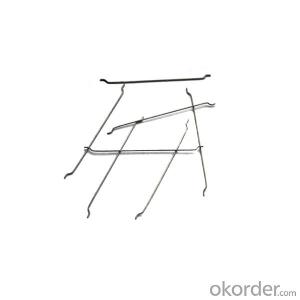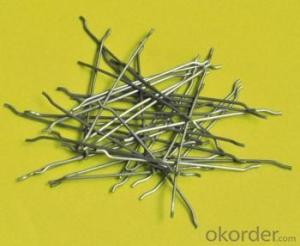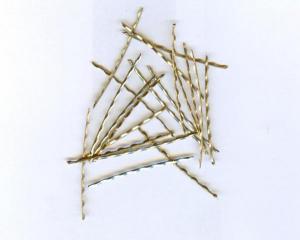Melt Extract Stainless Steel Fiber - Loose Steel Fiber by CNBM China International
- Loading Port:
- Tianjin
- Payment Terms:
- TT OR LC
- Min Order Qty:
- 1000 kg
- Supply Capability:
- 30000 kg/month
OKorder Service Pledge
OKorder Financial Service
You Might Also Like
Quick Details
| Place of Origin: | Hebei, China (Mainland) | Brand Name: | cnbm | Model Number: | CW04 |
| Material: | Steel | Material:: | Steel,low carbon steel wire | Standard:: | ASTM ,ISO9001,CE |
| Shape:: | hooked ends and straight middle | Grade:: | Q195 | Application:: | shortcrete on tunnel, underground project, dam plate |
| Tensile strength:: | 2850Mpa | Demension:: | per your requirement | Place of Origin:: | HeBei China (Mainland) |
| Brand Name:: | ZhiTai steel fiber | Delivery Detail:: | in 7 days upon receive prepayment |
Specifications
Steel fiber for Concrete Reinforcement
1.High tensile strength 2.Length 6-10mm 3.Diameter 0.15-0.3mm
1. diameter: 0.15-0.3mm
2. lengthe: 6-10mm
3. high tensile strength : 2850Mpa
4. It is widely used for concrete reinforcement.
| Packaging Details: | damp-proof poly-bag, 20--25Kg/bag,1000Kg(40bags),1100Kg(44bags)or1200Kg(48bags)/pallet,22,000Kg to 24,000Kg/20' container. |
| Delivery Detail: | 7days |
Picture
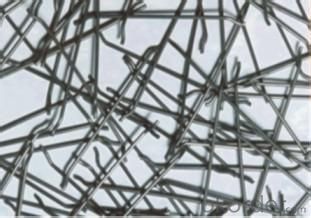
Steel fiber
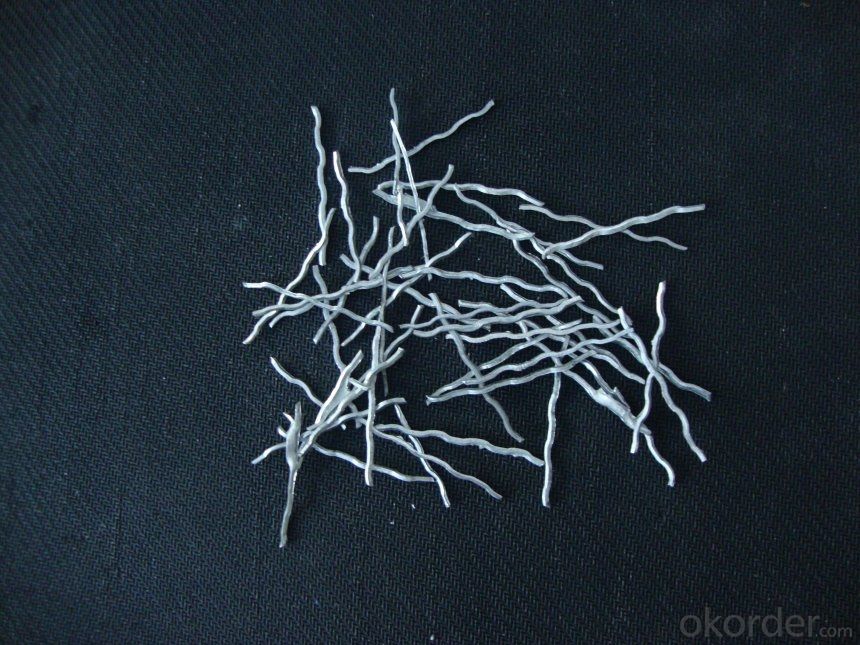
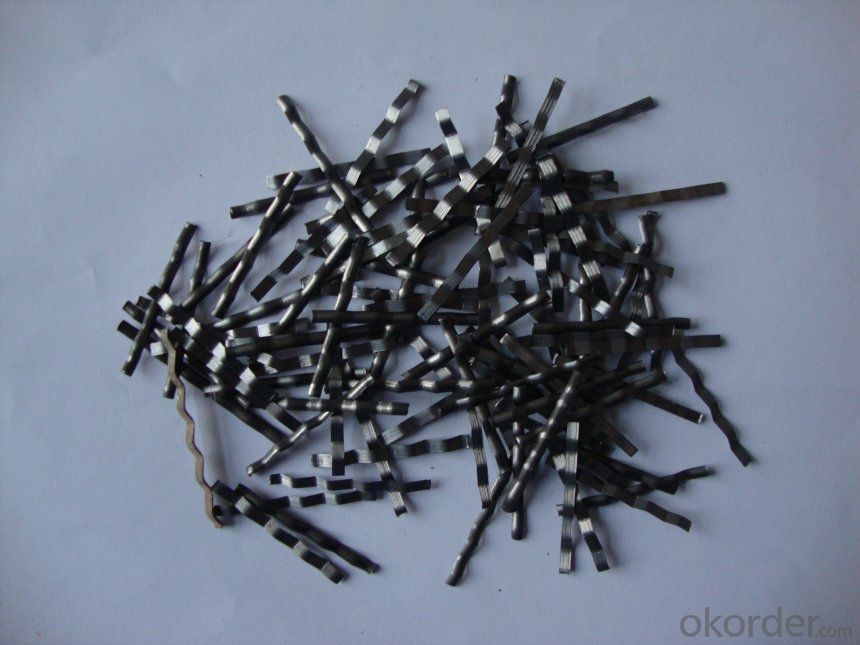
FAQ
certificated: ISO 9001
Technical advantages of Daye steel fiber:
A. Improve mechanical performance of concrete
B. Provide uniform distribution throughout concrete with excellent mixing
C. No balling or caking by adopt correct mixing method
D. Reduce concrete volume
E.Save construction time and cost
F.Reduce excavation volume
G.Available for jointless floor.
- Q: Can melt extract stainless steel fiber be used in precast concrete wall panels?
- Precast concrete wall panels can utilize melt extract stainless steel fiber, which enhances the material's mechanical properties by improving its tensile strength, toughness, and durability. The inclusion of stainless steel fibers in precast concrete wall panels provides additional reinforcement and reduces the risk of cracking and shrinkage. These fibers distribute stresses more evenly throughout the concrete, resulting in improved structural performance. Melt extract stainless steel fibers are well-suited for precast concrete applications due to their high melting point and corrosion resistance. This makes them highly durable and capable of withstanding harsh environmental conditions, including freeze-thaw cycles, chemicals, and moisture. Furthermore, melt extract stainless steel fibers are available in various lengths, diameters, and aspect ratios, allowing for customization based on the specific requirements of the precast concrete wall panels. This flexibility in fiber selection ensures that the desired mechanical properties of the concrete can be achieved. In conclusion, melt extract stainless steel fiber is an appropriate choice for reinforcing precast concrete wall panels, as it enhances their strength, durability, and performance.
- Q: How does the addition of melt extract stainless steel fiber affect the impact strength of concrete?
- The addition of melt extract stainless steel fiber to concrete can significantly improve its impact strength. Stainless steel fibers are strong and durable materials that are added to concrete mixes to enhance their mechanical properties. When mixed with concrete, these fibers create a three-dimensional network that improves the overall toughness of the material. This network acts as a reinforcement system, which absorbs and redistributes the energy generated during an impact event, thereby reducing the risk of cracking and fracture. The use of stainless steel fibers in concrete enhances its resistance to impact loads by increasing its flexural strength and ductility. This means that the concrete is better able to withstand sudden or repeated impacts without losing its structural integrity. Furthermore, the addition of stainless steel fibers also improves the overall durability of the concrete. Stainless steel is highly resistant to corrosion and oxidation, making it an ideal material for reinforcing concrete structures. By incorporating stainless steel fibers, the concrete becomes more resistant to environmental factors, such as moisture and chemical attacks, which can weaken the material over time. In conclusion, the addition of melt extract stainless steel fiber to concrete significantly enhances its impact strength by improving its toughness, resistance to cracking, and overall durability. This makes it a valuable addition for applications where concrete is subjected to high impact loads, such as industrial floors, pavements, and structures in seismic zones.
- Q: Can melt extract stainless steel fiber be used in tunnel segmental lining rehabilitation?
- Yes, melt extract stainless steel fiber can be used in tunnel segmental lining rehabilitation. This type of fiber is commonly used in concrete applications to enhance the mechanical properties of the material. By adding stainless steel fibers to the concrete mix, it can improve its tensile and flexural strength, reduce cracking, and increase its resistance to impact and abrasion. In tunnel segmental lining rehabilitation, where concrete is used to repair or strengthen the lining of the tunnel, melt extract stainless steel fibers can be added to the concrete mix to enhance its durability and structural integrity. This can help in prolonging the lifespan of the tunnel and ensuring its safe and efficient operation.
- Q: Can melt extract stainless steel fiber enhance the resistance of concrete to chemical attack?
- Yes, melt extract stainless steel fiber can enhance the resistance of concrete to chemical attack. The addition of stainless steel fibers improves the durability and performance of concrete by reducing the impact of chemical substances that could potentially degrade the concrete. Stainless steel fibers provide additional strength, increase the concrete's resistance to cracking, and enhance its overall lifespan in harsh chemical environments.
- Q: Does melt extract stainless steel fiber improve the resistance to chemical attack of concrete?
- Yes, melt extract stainless steel fiber can improve the resistance to chemical attack of concrete.
- Q: What is the effect of melt extract stainless steel fiber on the flexural toughness of concrete?
- The flexural toughness of concrete is significantly influenced by the incorporation of melt extract stainless steel fiber. Known for their high tensile strength and ductility, stainless steel fibers play a crucial role in enhancing the flexural toughness of concrete. By adding stainless steel fibers to concrete, the material gains reinforcement and increased strength. These fibers are evenly dispersed throughout the concrete matrix, creating a three-dimensional network that effectively resists cracks and distributes the applied load more efficiently. Additionally, the melt extract stainless steel fibers contribute to the post-cracking behavior of concrete. When subjected to a load, these fibers act as bridges across any cracks that may form, effectively transferring stress and preventing further propagation of cracks. This bridge-like effect enhances the ductility and energy absorption capacity of concrete, thereby improving its flexural toughness. Numerous studies have demonstrated that the inclusion of melt extract stainless steel fibers can significantly enhance the flexural toughness of concrete, resulting in improved resistance against bending and impact forces. This is particularly advantageous in structural applications where concrete is exposed to dynamic loads or where enhanced durability and crack resistance are desired. In summary, the inclusion of melt extract stainless steel fiber in concrete positively impacts its flexural toughness through reinforcement, improved post-cracking behavior, and increased resistance to bending and impact forces.
- Q: Can melt extract stainless steel fiber be used in water retaining structures?
- Yes, melt extract stainless steel fiber can be used in water retaining structures. This type of fiber is highly corrosion-resistant and can withstand exposure to water without compromising its performance. It can be incorporated into concrete or other materials used in water retaining structures to enhance their strength, durability, and crack resistance.
- Q: Can melt extract stainless steel fiber reduce the risk of early-age cracking in concrete?
- The inclusion of melt extract stainless steel fibers in the concrete mix can effectively mitigate the occurrence of early-age cracking. Shrinkage, temperature fluctuations, and insufficient tensile strength are common factors contributing to such cracking. The addition of these fibers enhances the overall tensile strength of the concrete, acting as a reinforcement that effectively disperses stresses and hinders the initiation and spread of cracks. Furthermore, these stainless steel fibers aid in controlling concrete shrinkage by diminishing the size of cracks, both in width and length. This subsequently minimizes the risk of early-age cracking and enhances the longevity and durability of the concrete structure.
- Q: Can melt extract stainless steel fiber improve the resistance of concrete to fire?
- Yes, melt extract stainless steel fiber can improve the resistance of concrete to fire. Stainless steel fibers are known for their high melting point and excellent heat resistance properties. When added to concrete, they can enhance its ability to withstand high temperatures and prevent spalling, cracking, and structural failure during a fire. The fibers act as reinforcement, improving the overall fire resistance of the concrete and extending its durability under extreme heat conditions.
- Q: Can melt extract stainless steel fiber be used in thin-section concrete elements?
- Melt extract stainless steel fiber is a viable option for incorporating into thin-section concrete elements. Commonly utilized in concrete to bolster its longevity, strength, and resistance to cracking, stainless steel fibers play a crucial role in enhancing flexural and tensile strength. This, in turn, reduces the likelihood of shrinkage and cracking. In the case of thin-section concrete elements like thin slabs or precast panels, the inclusion of stainless steel fibers serves to fortify the structure and prevent crack formation. By evenly distributing the load throughout the concrete, these fibers diminish the risk of localized stress concentrations. Moreover, melt extract stainless steel fibers possess exceptional corrosion resistance, rendering them suitable for use in concrete elements that face exposure to harsh environmental conditions or corrosive substances. Their non-rusting and non-corroding properties guarantee the concrete's long-term durability. Nevertheless, it is crucial to exercise caution when determining the dosage and distribution of stainless steel fibers in thin-section concrete elements, in order to prevent issues such as fiber balling or clumping. Adhering to proper mixing and placement techniques is imperative to ensure consistent dispersion of the fibers within the concrete matrix. In conclusion, melt extract stainless steel fibers can be effectively employed in thin-section concrete elements to enhance their structural performance and durability.
Send your message to us
Melt Extract Stainless Steel Fiber - Loose Steel Fiber by CNBM China International
- Loading Port:
- Tianjin
- Payment Terms:
- TT OR LC
- Min Order Qty:
- 1000 kg
- Supply Capability:
- 30000 kg/month
OKorder Service Pledge
OKorder Financial Service
Similar products
Hot products
Hot Searches
Related keywords
